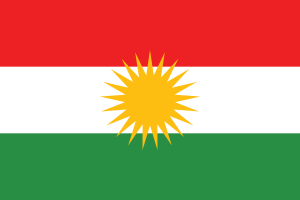Language/Northern-kurdish/Grammar/Conditional-Mood
Hi Northern Kurdish learners! 😊
In today's lesson, we will be discussing the conditional mood in Northern Kurdish. This is an important part of the language and understanding it will help you to communicate more effectively.
Don't hesitate to look into these other pages after completing this lesson: Northern Kurdish Grammar: Subordinating Conjunctions, Northern Kurdish Grammar Lesson: Understanding Place Adverbs, Genitive Case & Give your Opinion.
Overview[edit | edit source]
The conditional mood is used to express a hypothetical situation or a wish. It is formed by adding the suffix -in to the verb stem.
Examples[edit | edit source]
- Kurmancî (Northern Kurdish):
- Dixwazim (I want) → Dixwazinim (I would want)
- Dikim (I do) → Dikinim (I would do)
Formation[edit | edit source]
The conditional mood is formed by adding the suffix -in to the verb stem. The verb stem is the part of the verb that remains after removing the infinitive ending (-î/-in).
Examples[edit | edit source]
- Kurmancî (Northern Kurdish):
- Dixwazî (to want) → Dixwaz- (verb stem) + -in (suffix) → Dixwazin (would want)
- Dikî (to do) → Dik- (verb stem) + -in (suffix) → Dikin (would do)
Usage[edit | edit source]
The conditional mood is used to express a hypothetical situation or a wish. It can also be used to express politeness or to make a request.
Examples[edit | edit source]
- Kurmancî (Northern Kurdish):
- Ez dixwazinim ku tu bibînî (I would want you to come)
- Ez dikinim ku tu çêbikî (I would do if you left)
- Tu dikinî? (Would you do it?)
Conclusion[edit | edit source]
Now you have a better understanding of the conditional mood in Northern Kurdish. Remember to use the suffix -in to form the conditional mood and to use it to express a hypothetical situation or a wish.
If you have any questions, please ask them in the comments section below.
Feel free to edit this wiki page if you think it can be improved. 😎

